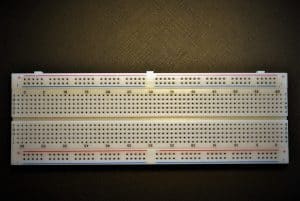Molecular Sensors: Chemical Detection
Molecular sensors have emerged as an essential tool for chemical detection, providing valuable insights into various chemical processes. They play a crucial role in fields such as environmental monitoring, biomedical diagnostics, and industrial quality control. These sensors can detect the presence of specific molecules, identify their concentration, and provide real-time data, making them highly versatile and efficient devices. With advancements in technology, molecular sensors have become more sophisticated and precise, making them an indispensable tool in the world of analysis and detection.
Understanding Molecular Sensors
Molecular sensors are devices that can detect and measure small amounts of specific molecules in a given sample. These sensors mainly rely on the interaction between the target molecule and a specific receptor, which creates a measurable signal. The receptors used in molecular sensors can be enzymes, antibodies, or other types of biomolecules. They are highly selective and sensitive, making them capable of detecting a wide variety of molecules, ranging from organic compounds to metals and gases.
The working principle of molecular sensors is based on the idea of ligand-receptor binding, where the target molecule acts as the ligand and the receptor as the binding site. Upon binding, changes in the physical or chemical properties of the receptor occur, which can be measured and used for detection. This binding can result in changes in electrical, optical, or mechanical properties, depending on the sensor’s design, allowing for different detection methods.
Types of Molecular Sensors
There are several types of molecular sensors, each with its unique capabilities and applications. One of the most commonly used sensors is the fluorescence sensor, which relies on changes in fluorescence intensity or wavelength to detect the presence of a target molecule. Another type is the electrochemical sensor, which measures electrical changes resulting from the binding between the target molecule and the receptor.
Other types of molecular sensors include colorimetric, mass-based, and surface acoustic wave sensors, each with its specific detection principle and application. The choice of sensor depends on the target molecule, sensitivity required, and the sample matrix.
Applications of Molecular Sensors
Molecular sensors have a wide range of applications, making them an essential tool in various industries. In environmental monitoring, these sensors are used to detect pollutants, such as heavy metals, pesticides, and toxic chemicals, in water and air. They play a vital role in food safety, detecting harmful substances in food products and ensuring their quality.
In biomedical diagnostics, molecular sensors are used to identify biomarkers for various diseases and monitor the effectiveness of treatments. They can also detect infectious agents, such as viruses and bacteria, in clinical samples, helping with disease diagnosis and management.
In industrial settings, molecular sensors are used for quality control and process monitoring to ensure product purity and consistency. They can also detect impurities and contaminants in products, preventing potential hazards and ensuring safety.
Advancements in Molecular Sensor Technology
Over the years, there have been significant advancements in molecular sensor technology, making them more reliable and efficient. With the development of nanotechnology, sensors have become smaller and more sensitive, allowing for real-time monitoring and detection at the molecular level. Furthermore, the use of biomimetic materials has increased the selectivity and stability of sensors, making them more accurate and robust.
The integration of molecular sensors with data analysis software has also improved their capabilities, providing a better understanding of the gathered data. Researchers are continually exploring new materials and techniques to enhance sensor performance, making them an exciting area of study.
Conclusion
Molecular sensors have revolutionized the field of chemical detection, providing valuable insights into various chemical processes. Their versatility, sensitivity, and accuracy make them an essential tool in industries such as environmental monitoring, biomedical diagnostics, and industrial quality control. With advancements in technology, molecular sensor technology is continually evolving, making them more reliable and efficient. As we continue to explore the potential of these sensors, we can expect to see more significant breakthroughs and applications in the future.










